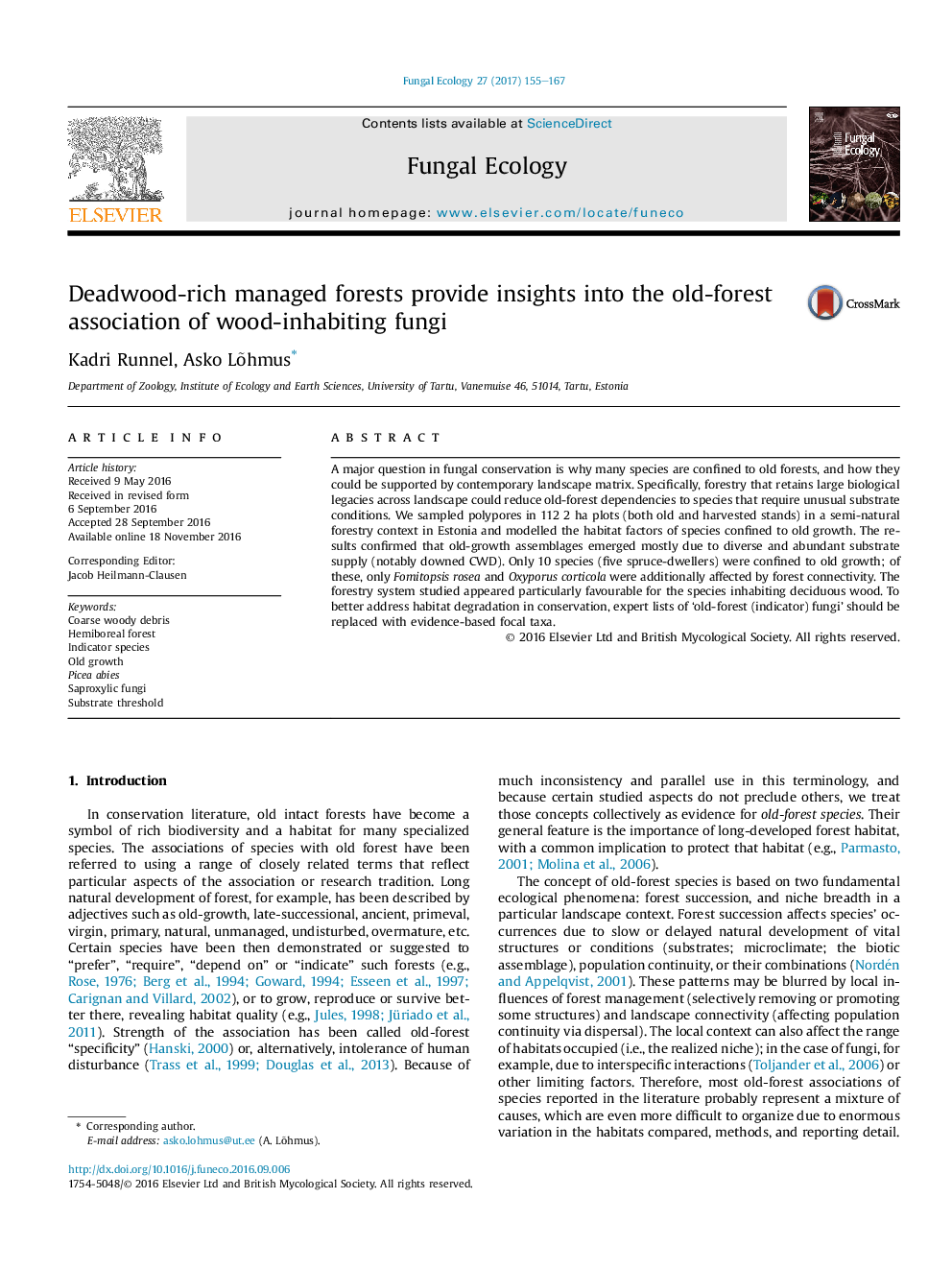| Article ID | Journal | Published Year | Pages | File Type |
|---|---|---|---|---|
| 5517627 | Fungal Ecology | 2017 | 13 Pages |
â¢Most putative old-forest polypores can inhabit semi-natural managed forests.â¢Substrate availability is the main cause of old-forest association in polypores.â¢Large fallen spruces host a distinct guild of old-forest specialists.â¢Landscape connectivity was only a minor factor in Estonia.â¢Focal-species approaches might be more practical than old-forest indicator lists.
A major question in fungal conservation is why many species are confined to old forests, and how they could be supported by contemporary landscape matrix. Specifically, forestry that retains large biological legacies across landscape could reduce old-forest dependencies to species that require unusual substrate conditions. We sampled polypores in 112 2Â ha plots (both old and harvested stands) in a semi-natural forestry context in Estonia and modelled the habitat factors of species confined to old growth. The results confirmed that old-growth assemblages emerged mostly due to diverse and abundant substrate supply (notably downed CWD). Only 10 species (five spruce-dwellers) were confined to old growth; of these, only Fomitopsis rosea and Oxyporus corticola were additionally affected by forest connectivity. The forestry system studied appeared particularly favourable for the species inhabiting deciduous wood. To better address habitat degradation in conservation, expert lists of 'old-forest (indicator) fungi' should be replaced with evidence-based focal taxa.
Graphical abstractDownload high-res image (385KB)Download full-size image
